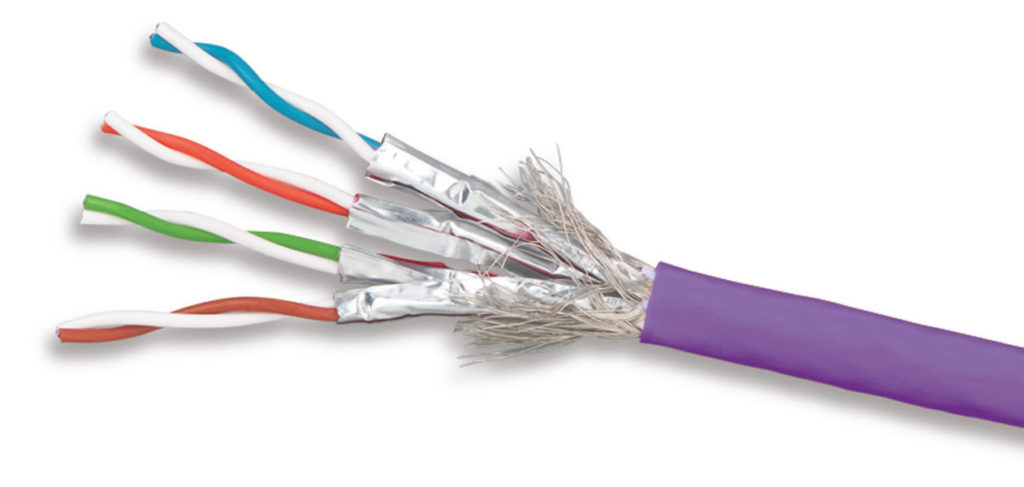When we talk about “future proofing” in electronic industry, we’ll find it difficult to define it as the technology and science changes so fast to meet the constantly growing needs. We used to regarded the cat 5e, cat 6 and cat 6a patch cable as “future proofing”, while cat 7 patch cable deserves the name in recent years and the real “future proofing” may be cat 8, cat 9 or even cat 10 patch cable in the near future. In this paper, it will mainly introduce the information of cat 7 patch cable—an ideal solution for Ethernet cabling in today’s electronic industry, which is worth the extra cost for the Ethernet network deployment.
Cat 7 patch cable is also referred to as category 7 patch cable, which was first published in 2002 by the International Organization for Standardization (ISO). It is also known as Class F cabling, used for the cabling infrastructure of 1000BASE-T (Gigabit Ethernet, or GbE) and 10GBASE-T (10-Gigabit Ethernet, or 10 GbE) networks. In comparison with the preceding patch cable like cat 5e, cat 6 and cat 6a patch cable, it has the ability to support the 10GBASE-T network at lengths up to 100 meters and operate at 600 MHz due to the fully shielded structure of its twisted wire pairs, which achieves a higher performance. In short, cat 7 patch cable is strongly recommended for Ethernet cabling as an ideal solution.

As the twisted wire pairs of cat 7 patch cable is fully shielded, it is also called Screen Shielded Twisted Pair (SSTP) or Screened Foiled Twisted Pair (SFTP) wiring, which almost completely eliminates alien crosstalk while significantly improving noise resistance. But considering that the price of one device is always measured by its performance, there is no doubt that cat 7 patch cable is a more expensive solution for network deployment. Do you wondering whether it is worth the extra cost? Is there any significant difference in contrast to the preceding patch cable like cat 6 and cat 6a patch cable? Does it perform much higher? Let’s talk about this topic.
In general, the cat 6 patch cable is always used to support 1000BASE-T network that can also transmit 10G signals at 250 MHz with the lengths up to 55 meters. By contrast, the cat 6a patch cable is more commonly used for 10GBASE-T network, which is capable of transmitting the signals with a maximum length of 100 meters and operating at 500 MHz. As for the cat 7 patch cable, it is a better choice for 10GBASE-T network that operates at speeds of 10 Gb/s with 100 meters and transmits the frequencies up to 600 Mhz, as mentioned above. Except these data, it is also estimated that the cat 6 patch cable can only be used for ten years although it is relatively cheaper than cat 7 patch cable. But the cat 7 patch cable does have a 15-year lifecycle, which would greatly increase its overall return on investment (ROI).
After comparison and analysis, it is easy to learn that the cat 7 patch cable, an ideal solution for Ethernet network deployment, owns even more strict specifications for crosstalk and system noise for its individual wire pairs are fully shielded. In contrast to cat5 and cat6, the cat 7 patch cable is more expensive but offers much higher performance and more durable lifecycle, which really pays off. In addition, the compatible issue can be almost neglected if you choose the cat 7 patch cable because it is backwards compatible with the traditional cat5 and cat6 patch cable.









